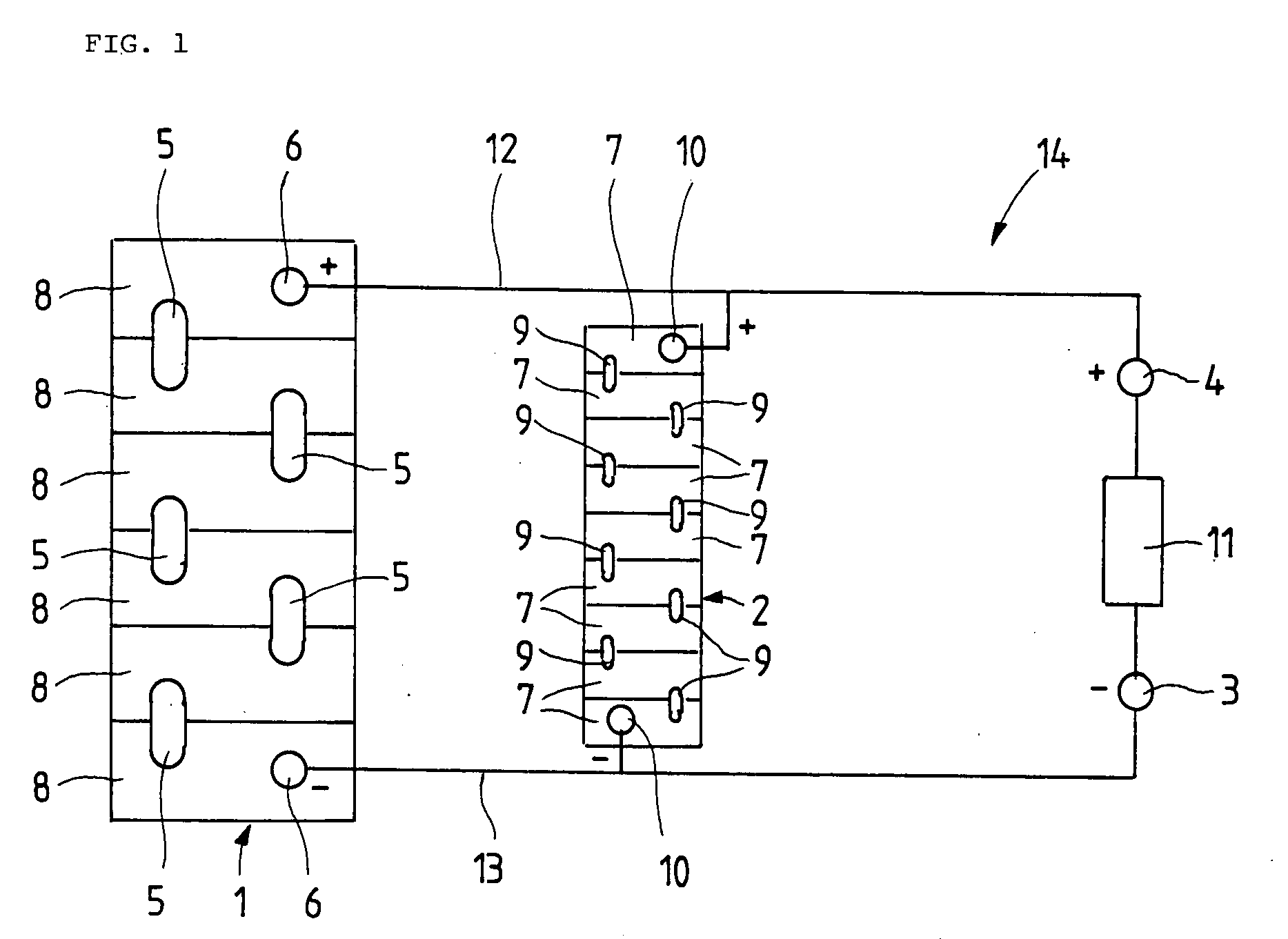Accumulator arrangement
a technology of accumulator and accumulator plate, which is applied in the direction of nickel accumulator, sustainable manufacturing/processing, nickel accumulator, etc., can solve the problems of long use periods at a high energy consumption, inability to fully exploit the capacity of the accumulator, and even increase the problem of problems, so as to achieve cost saving, small internal resistance, and large internal resistance
- Summary
- Abstract
- Description
- Claims
- Application Information
AI Technical Summary
Benefits of technology
Problems solved by technology
Method used
Image
Examples
Embodiment Construction
[0039] The single drawing figure shows a lead-acid accumulator using sulphuric acid as an acid. The lead-acid accumulator 1 consists of six series-connected accumulator cells 8, with the series connection being established by connecting the corresponding poles through electrically conductive bridges 5. The accumulator 1 includes two terminals 6, one each for the positive pole and the negative pole. The drawing figure further shows a nickel-cadmium accumulator 2 which is formed from nine cells 7. The cells 7 are electrically interconnected in series by means of bridges 9. The accumulator 2 has two terminals 10, one each for the positive pole and the negative pole. Through lines 12, 13 the positive poles 6, 10 of the accumulators 1, 2 are connected to the positive connection pole 4 of the accumulator arrangement 14. Correspondingly, the negative poles 6, 10 of the accumulators 1, 2 are connected to the negative connection pole of the accumulator arrangement 14. Accordingly, the two ac...
PUM
 Login to View More
Login to View More Abstract
Description
Claims
Application Information
 Login to View More
Login to View More - R&D
- Intellectual Property
- Life Sciences
- Materials
- Tech Scout
- Unparalleled Data Quality
- Higher Quality Content
- 60% Fewer Hallucinations
Browse by: Latest US Patents, China's latest patents, Technical Efficacy Thesaurus, Application Domain, Technology Topic, Popular Technical Reports.
© 2025 PatSnap. All rights reserved.Legal|Privacy policy|Modern Slavery Act Transparency Statement|Sitemap|About US| Contact US: help@patsnap.com


